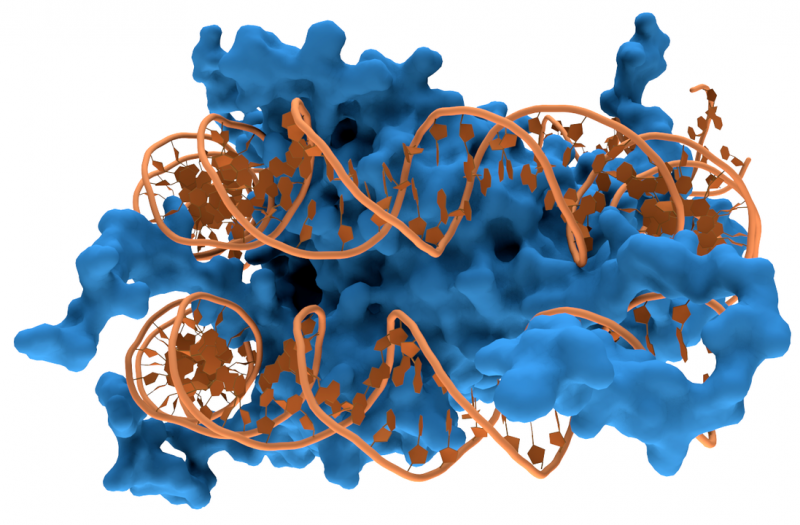By Sophie Arthur
November 15, 2019
Time to read: 4 minutes
The nucleus of each and every cell in our bodies is packed with DNA that is 2 metres in length. So, how do you package all of that DNA into something less than the width of a single hair? The answer. Histones. DNA is wrapped around these proteins to form a complex called chromatin and allows the DNA to be packaged up and condensed into a smaller and smaller space.
In almost all eukaryotes, histone-based chromatin is the standard, yet in bacteria, there are no histones. So, how and why have histones become so entrenched in our chromatin structures during evolution, but bacterial genomes don’t need them. Interestingly, another branch of life called archaea – another type of single-celled organism – are even more flexible as some do have histones and some don’t. This makes archaea a great model to help us try and understand how you can build chromatin and whether there is anything special about histones. Can we still get chromatin-like structure if we swap histones for some other protein? Two new research studies published in eLife on 6 November and 11 November by the Molecular Systems group at the LMS shared insights into these questions.

Building chromatin-like structures
The archaeon Thermoplasma acidophilum grows optimally in very acidic conditions with high temperatures. It doesn’t have histones, but interestingly its ancestors did, so how does this archaeon package its genome without histones? Previous studies had shown that Thermoplasma gained a bacterial protein via horizontal gene transfer – the movement of genetic material between unicellular or multicellular organisms other than through reproduction. Research by Antoine Hocher in the Molecular Systems lab has demonstarted that this bacterial protein has converged to act like a histone in Thermoplasma. Like histones, it prefers binding DNA rich in C and G nucleotides and protects the DNA from nuclease digestion. This shows that you can make similar chromatin structures using different proteins and is a striking case of convergent evolution across different kingdoms of life.
Escherichia coli is a bacterium, which doesn’t have any histones. It is a system that is naïve to histones and hasn’t evolved to deal with histone:DNA structures. The second paper, led by PhD student Maria Rojec, asks the question how this system copes when you add an archaeal histone into the mix. Excitingly, these histones, when expressed in E. coli, bind the genome nearly everywhere in sequence-specific ways and formed repressive structures down-regulating the expression of some genes. The bacteria, however, don’t seem to care much that these histone proteins are bound to its DNA. This research shows that packaging up the DNA into chromatin isn’t completely shutting down gene expression. Instead, histones are being incorporated in the bacterial genome without affecting key processes in the cell, like replication or transcription. It suggests that histones in present day eukaryotes may have evolved initially without interfering with these key DNA processes, and only later became global repressive forces.
Tobias Warnecke, Head of the Molecular Systems Group at the MRC LMS and senior author of both these papers, discussed the next steps for this research:
“We want to explore more ‘odd systems’ with exceptional cases where there are interesting combinations of proteins and we don’t know what the chromatin structure looks like. We want to look at other archaea, algae and other natural histone mutants and dissect chromatin diversity across the tree of life.”
‘Chromatinization of Escherichia coli with archaeal histones’ was published on 6 November in eLife. Read the full article here.
‘The DNA-binding protein HTa from Thermoplasma acidophilum is an archael histone analog’ was published on 11 November in eLife. Read the full article here.